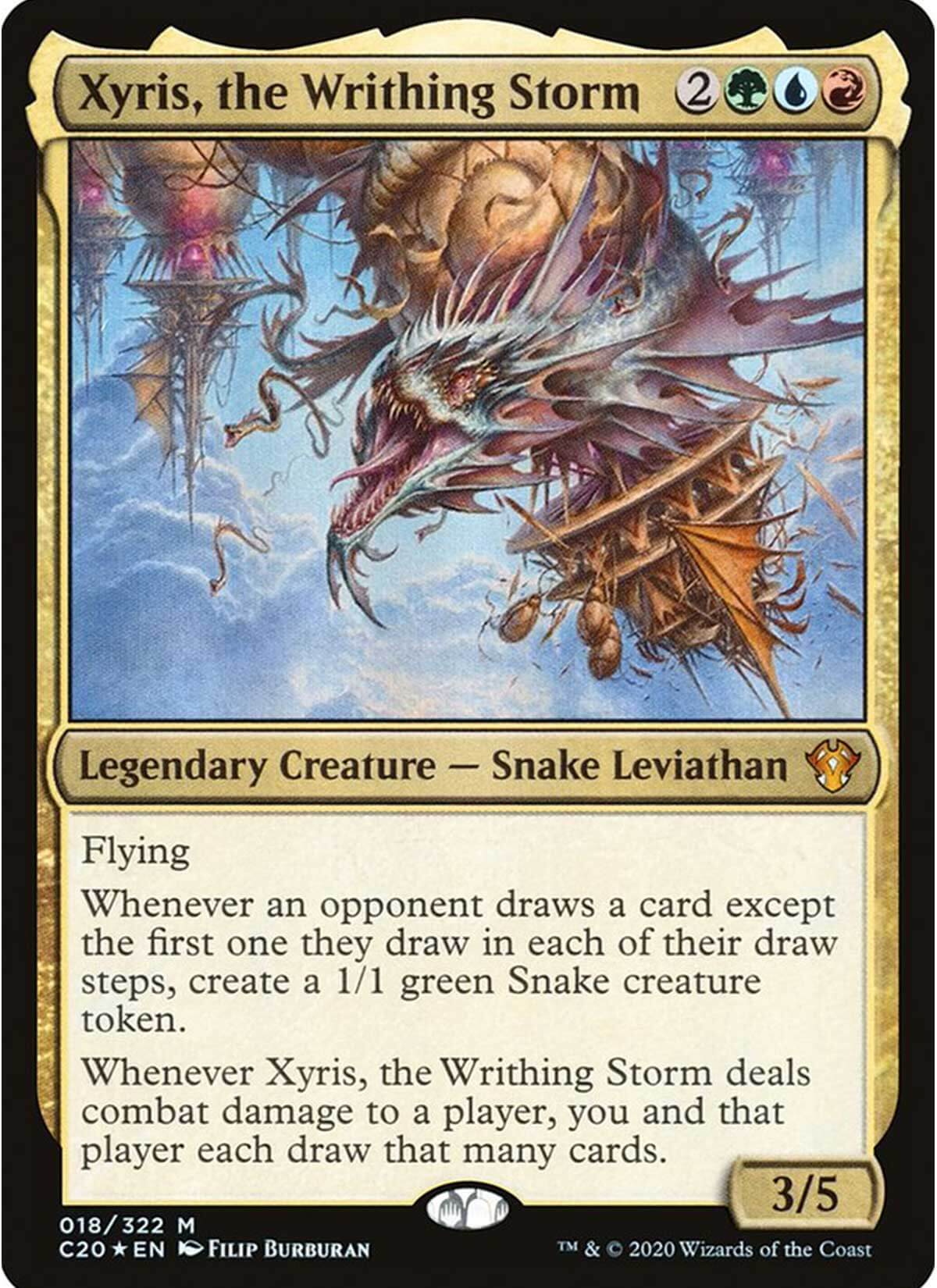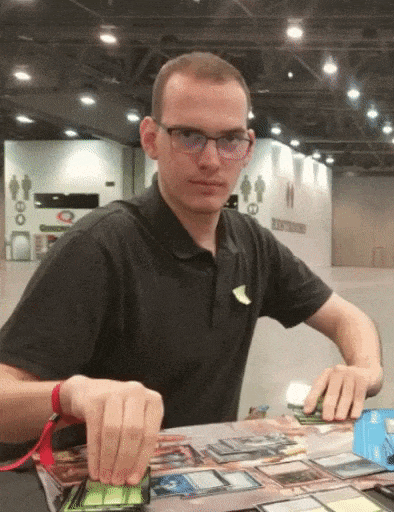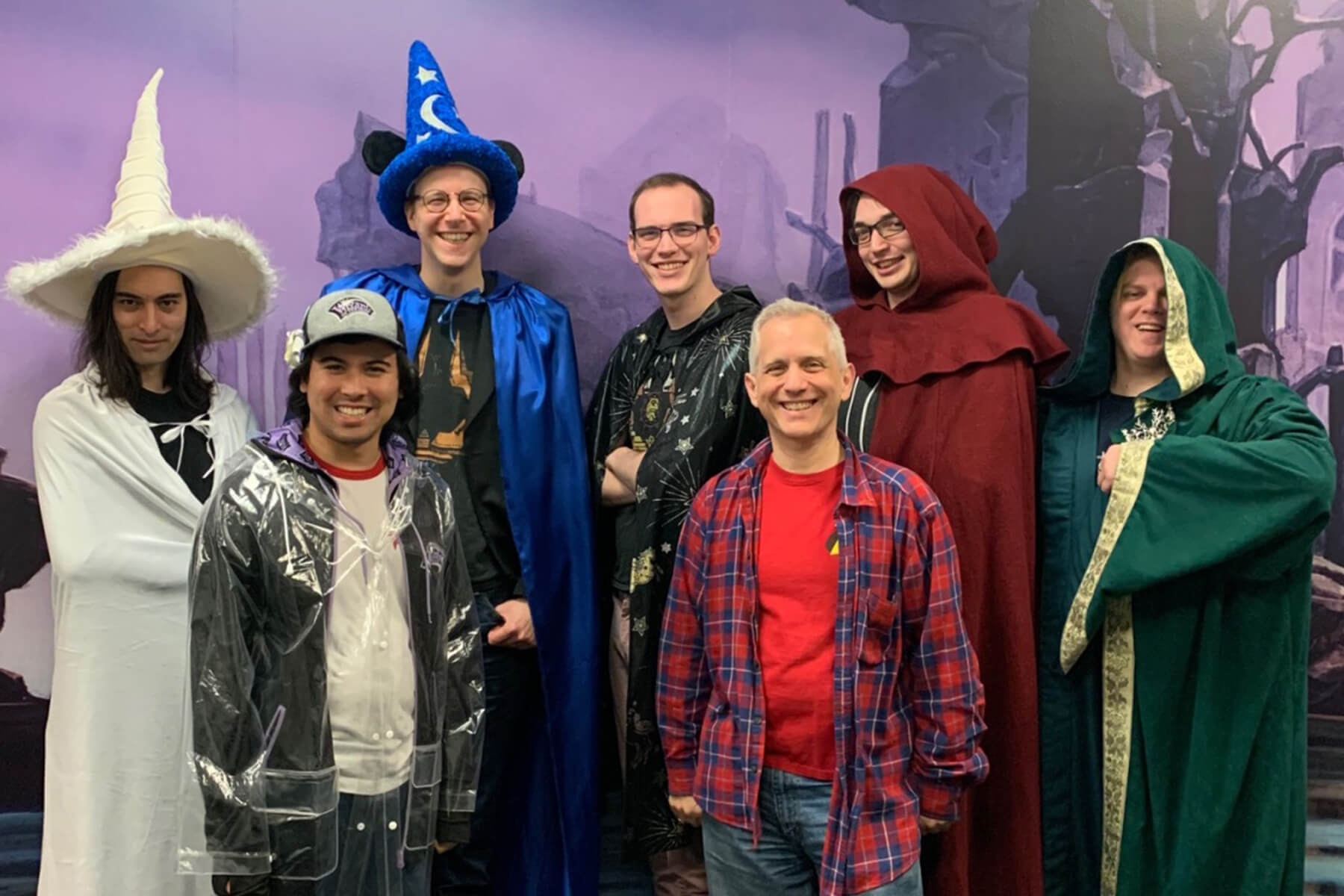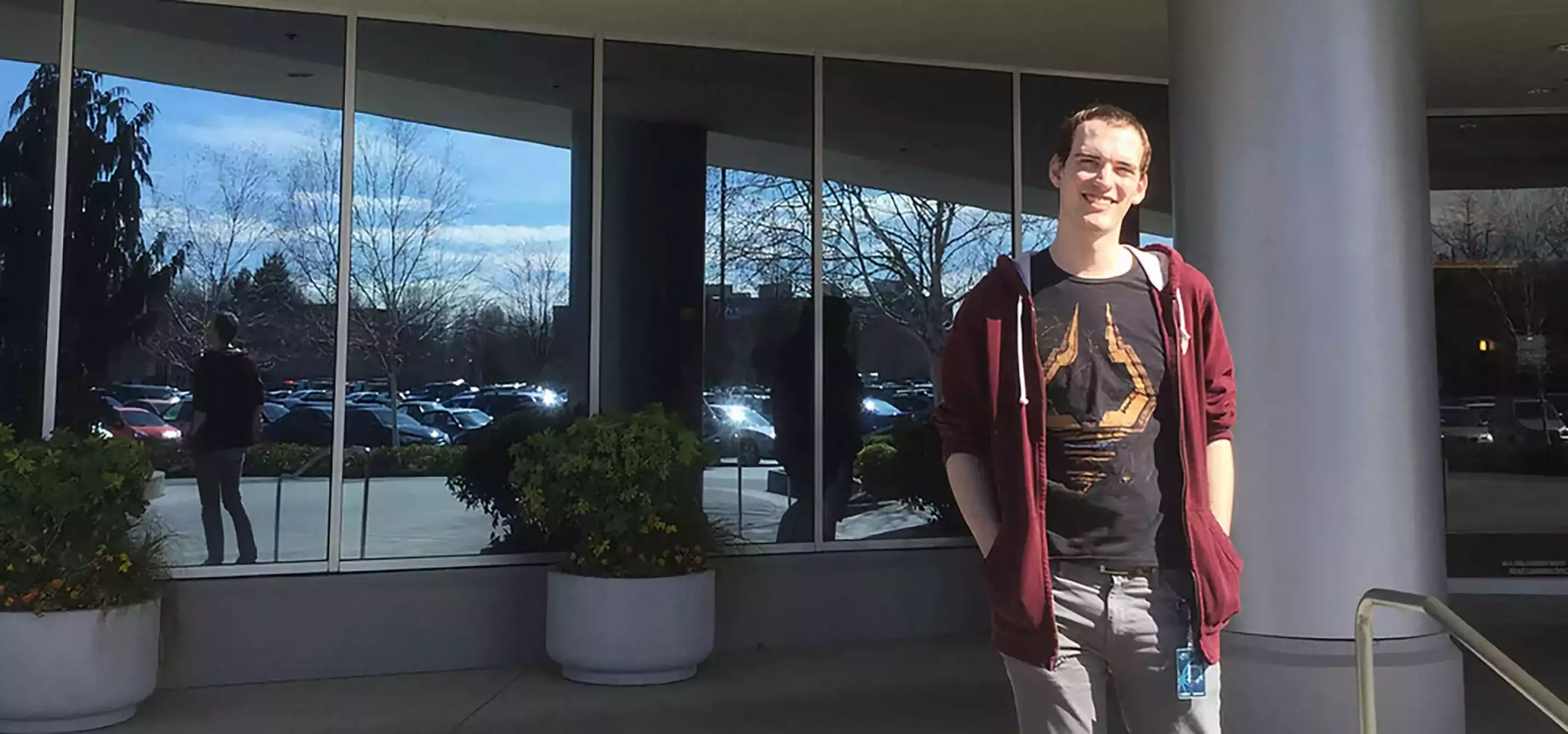Around junior year, Corey Bowen, like many DigiPen students, started wondering what his near-term future had in store. “I was learning a lot and had no idea where I was going to land,” Bowen says. A BS in Computer Science and Game Design student, Bowen made fast friends at DigiPen teaching his fellow Dragons how to play Magic: The Gathering, a passion he picked up his senior year of high school. “A lot of people start internships their junior year at DigiPen, so I was looking at opportunities and found one at Wizards of the Coast designing Magic cards,” Bowen says. “I remember going, ‘What? A Magic internship? Oh my god, Magic is all I care about… is this the dream landing spot?’”
It was, indeed, the dream landing spot.
After a very successful internship, Bowen was hired in 2018 as a full-time game designer on Magic: The Gathering, where he now creates and develops Magic card gameplay mechanics, structures and themes. He already has an impressive list of achievements to show for his nearly four years on the job, leading the design on a number of Magic: The Gathering Commander decks, including popular recent sets like Ikoria, Zendikar Rising, Kaldheim, and Strixhaven.

The design process on a set of Magic cards starts in the Exploratory Stage – where game designers, artists, and writers at Wizards of the Coast throw ideas at the wall for around a month and see what sticks. “We discuss all the wacky, new, interesting stuff we think might be fun,” Bowen says. Those ideas can come from anywhere. While designing a set for the monster-themed world of Ikoria, a designer approached Bowen with an unusual pitch. “They came up and said, ‘Hey, you should make a Snakes on a Plane card.’ So I said, ‘Yeah! I’ll try that out!’” The result, a card named “Xyris, the Writhing Storm,” made it all the way through production. It depicts a giant snake leviathan taking down a fleet of balloon-like airships.
After the Exploratory Stage comes the Vision Design Stage, where the game designers start to flesh out ideas gathered from Exploratory for a few months. “We take more educated guesses at what kind of themes could work with these sets, what could feel really resonant in the world we’re doing this in, and vet all the raw design potential to figure out the best structures,” Bowen says. At the same time, the worldbuilding team starts to work separately in parallel with Bowen’s team, figuring out what notes they want to hit with the card art and narrative.
“You can start designing a card from a lot of different angles,” Bowen says. “The terminology we use at Magic for the two main approaches are ‘top-down’ or ‘bottom-up’ design.” Top-down starts from a creative angle. “Maybe worldbuilding says they’re making a bunny rabbit character, so we as game designers try to think up a card mechanic that feels like something a rabbit would do.” Bottom-up, on the other hand, starts from a mechanical perspective. “That’s where we’re looking at our systems and going, ‘What could work with this green/white life-gain card we’ve made? Oh, maybe it’s a bunny rabbit?’”
After the Vision Desgin Stage comes the Set Design Stage, which can last for the greater part of a year. This is where Bowen takes charge as a design lead, and where the majority of the work goes into developing what will become the final polished set. Card mechanics, themes, and archetypes start to solidify bit by bit as the team creates cards at the appropriate rarity level (common, uncommon, rare, and mythic) for the set.

“When I was on more day-to-day design, I’d get card design prompts from my lead,” Bowen says. “It was fun just kicking back and going ‘What assignments do I have today? Let’s brainstorm. This will be a breeze.’” Now that he’s a lead, Bowen is the one setting the goals for all the cards in a set and handing out the assignments to staff designers. “And then if you don’t like the cards you get back, you have to make your own cards to replace them, all while working alongside the worldbuilding team to make sure we’re matching all these different design elements up,” Bowen says. “Making 200-plus card sets, it’s a lot to keep track of. But it’s really fun to have this ownership over the game and get to explore all the design space Magic offers.”
The Set Design Stage also includes one day a week reserved for playing Magic. “We build out a rudimentary version of the deck, playtest, and iterate a lot,” Bowen says. “The cards are these constantly changing pieces. Maybe a card idea gets filed and sticks forever, maybe it gets tweaked in playtesting, or maybe it gets cut completely.” In the final Play Design Stage, a separate Wizards of the Coast team with a background in competitive Magic vets the nearly complete set for its competitive elements, sending back proposed changes to fix any balance issues.
It’s really fun to have this ownership over the game and get to explore all the design space Magic offers.
As one might imagine in a nearly 30-year-old game like Magic, designing new cards can be a challenge. “It’s certainly really tricky when you have an idea, and then realize, ‘Well actually, combined with this one card from 20 years ago, I might accidentally be creating a two-card infinite combo,’” Bowen says. “Or you look at Magic history and go, ‘Dang! This idea I had has already been done.’”
At the same time, Bowen says one of the highlights of his work has been safeguarding the integrity and history of the game through his recent, honorary position on “The Council of Colors.” Magic cards come in five different colors, each of which historically have unique effects and themes. “The people on The Council of Colors sit there to safeguard the specific effects of each color and make sure they feel distinctive and cohesive as they’re designed,” Bowen says. “There’s a lot of philosophy and restrictions on what different colors are allowed to do.” The eight-person council features head Magic designer Mark Rosewater and design manager Mark Gottlieb, one member representing each of the five colors, and one “colorless” member.

“A year or two into Wizards, there was an open spot, so I joined as the colorless member, which is like the training wheel slot for newcomers,” Bowen says. A few years later, a vacancy found Bowen rising in rank, where he now sits as the councilmember overseeing the black slice of the color pie. “It’s really fun, and luckily, there’s a lot of cool stuff that black can do!” Bowen says.
Even as a lead designer with creative control at Magic, Bowen says two of the most important lessons he learned at DigiPen keep him grounded at work. “DigiPen cultivated this really important idea of making sure to ask for help, but also, another really important thing – trusting your teammates,” Bowen says. “Especially in this industry, you can’t just go out and do everything you think is smart, because no one person is smart enough to make something that’s going to appeal to everyone.”
It’s an especially vital lesson to keep in mind when designing a game like Magic, with its nearly infinite array of play styles and preferences. “I’m always messaging three different people immediately asking what they think about changes I’ve made so I can get their opinions,” Bowen says. “If one person made all the cards, they’d have so many different blind spots because they’d design the way they love Magic. But get a bunch of designers together who love Magic in different ways for different reasons, and you cover each other’s blind spots.”
